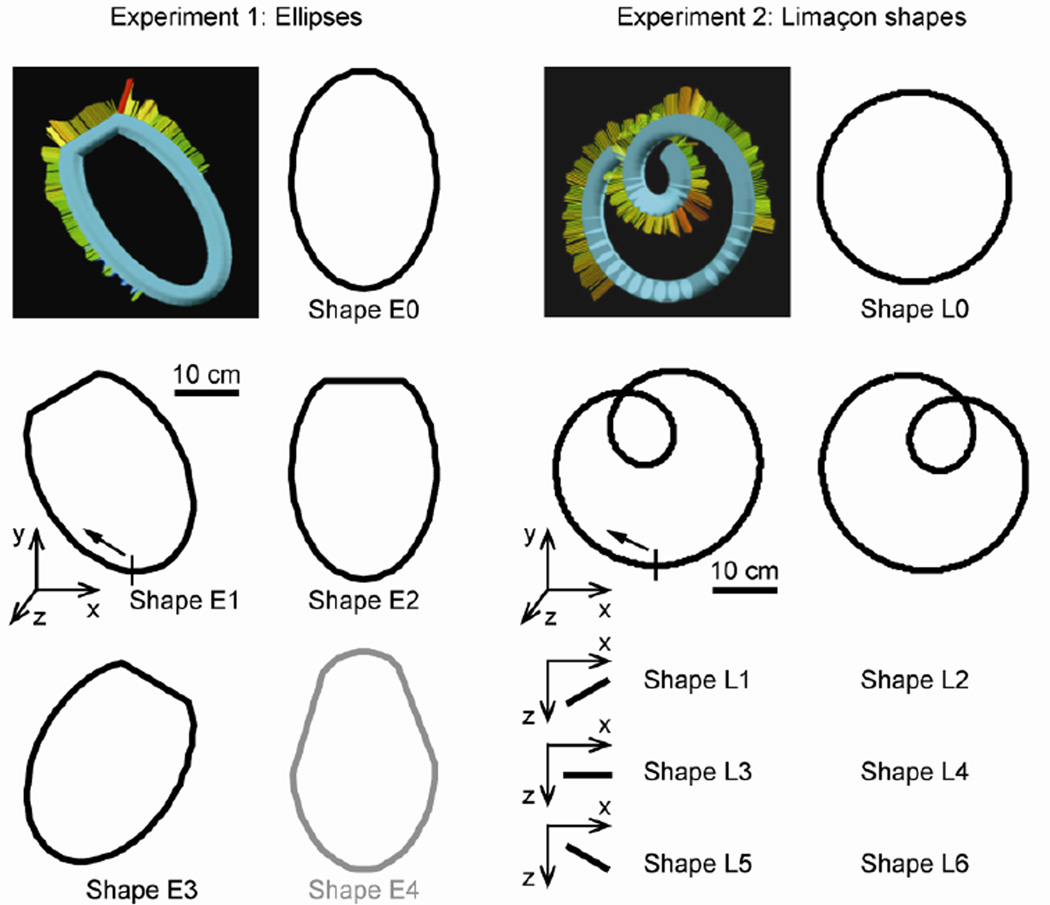Fig. 2.
Experimental design. Left column: Tubular ellipses (experiment 1) positioned in the frontal plane. Shapes E1–E3 were rotated 30, 0, or −30 deg around the z-axis and a portion located at the highest point of the major axis was replaced with a straight tubular segment. Shape E4 (gray) was not used in the analyses. Shape E0 was the control condition. Subjects started their movement at the bottom of the shape (indicated by the vertical line in E1) and were instructed to move in a clockwise direction. Right column: Tubular Limaçon shapes (experiment 2). Shapes were rotated 25 deg counterclockwise (L1, L3, L5) or 25 deg clockwise (L2, L4, L6) around the z-axis. These shapes were then rotated −30 deg (L1 and L2), 0 deg (L3 and L4) or 30 deg (L5 and L6) around the y-axis. Shape L0, the control condition, was a circle oriented in the frontal plane.

